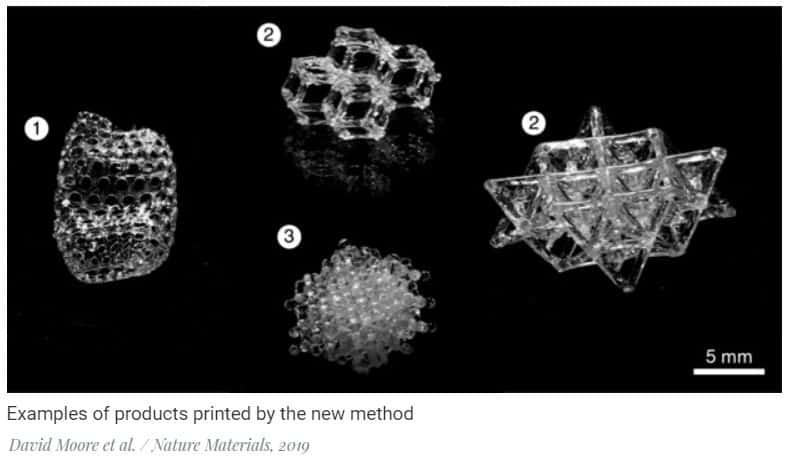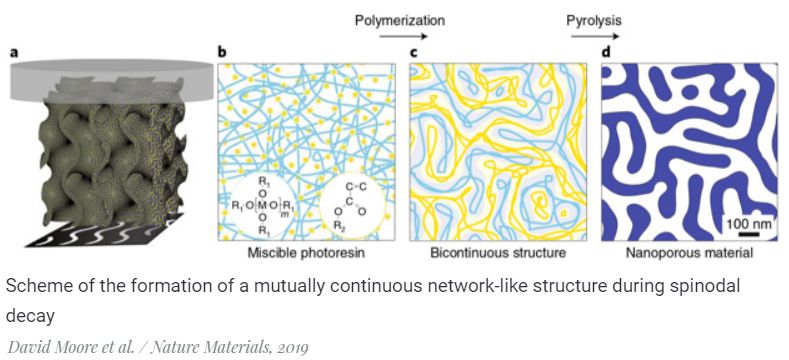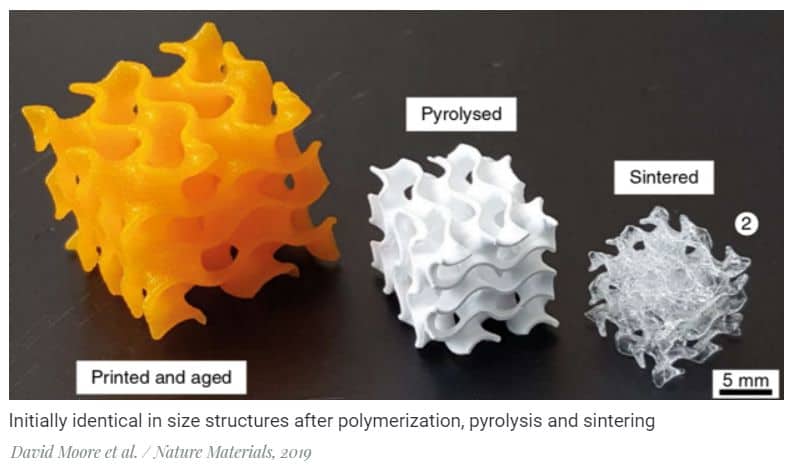3D printing is most often used in two cases: when you need to quickly create a subject of the desired shape, without creating a well-established production process with expensive moulds and other equipment, or when it is necessary to make a part with a complex structure, which is more expensive to create casting or other classical methods. For the second cases, engineers have long been developing printers that print not polymers, but other materials, including ceramics, glass, and even chocolate.
To make our life easy, a team of scientists have developed a 3D printing method that allows you to print glass objects with a complex structure using different materials, but without using heat during printing, which other methods do not allow.
However, glass, ceramics and other similar materials are inconvenient to use in 3D printing due to the high melting point. As a solution, some groups of scientists proposed first printing a precursor of glass and then conducting high-temperature annealing, so that the printer does not need to be adapted to the heat. Until now, such methods have been demonstrated only with silicon oxide, but now there is a more universal method.

The authors used various solutions consisting of an inorganic alcohol precursor to create glass, photoactive monomer and light-absorbing substance. The compositions were selected in such a way that the components are initially in the soluble area of the system state diagram but after photopolymerization move into the area of incomplete mixability. As a result, there is a spinodal decomposition and two phases (oxide precursor and polymer) are separated, forming a mutually continuous network structure.

After polymerization, the object must be subjected to pyrolysis, in which the polymer part burns out and the glass remains, and at this stage, the glass product is porous, with pores smaller than a micrometre. If it is necessary to obtain transparent glass, it must be further sintered to obtain a solid and transparent structure. The transparency of glass obtained after sintering is approximately 85%. Measurements showed that after sintering, the relative density of such glass is 98%.

As an example, researchers printed many complex structures, most of which are volumetric grids with subtle elements. In addition, scientists have demonstrated the versatility of the method by printing not only silicate glass but also borate and phosphate glass.
